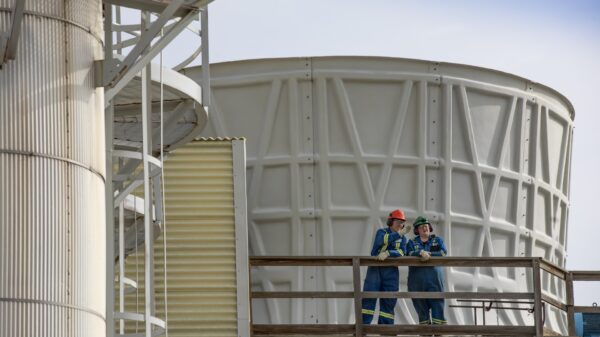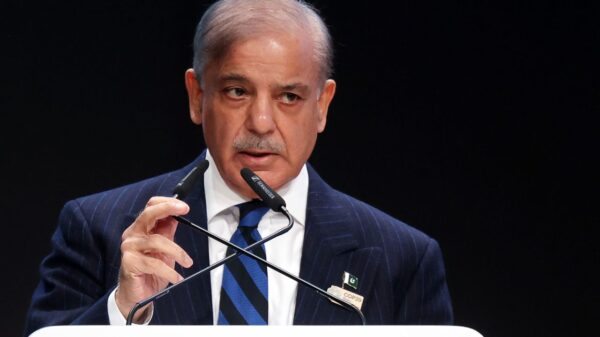Introduction: The Iran Nuclear Deal and Its Objectives
The Iran Nuclear Deal, formally known as the Joint Comprehensive Plan of Action (JCPOA), was a landmark agreement aimed at curbing Iran’s nuclear capabilities while simultaneously alleviating economic pressure through the lifting of sanctions. Finalized in July 2015 after extensive negotiations, the JCPOA represented a significant diplomatic effort led by the P5+1 group, which includes the United States, the United Kingdom, France, Russia, China, plus Germany, and the European Union.
The primary objectives of the JCPOA focused on ensuring the peaceful nature of Iran’s nuclear program. This was to be achieved by imposing stringent limitations on Iran’s enrichment capacity and stockpile of enriched uranium, restricting plutonium production, and mandating comprehensive inspections by the International Atomic Energy Agency (IAEA). In exchange, Iran would see the gradual lifting of various economic sanctions that had severely hampered its economy.
Key milestones leading up to the agreement included the interim Joint Plan of Action in 2013, which provided a framework for discussions and temporary measures to halt Iran’s nuclear progress. The comprehensive negotiations symbolized significant international collaboration, with regular high-level discussions culminating in the final accord in Vienna. The initial reception of the JCPOA was mixed, with advocates praising it as a triumph of diplomacy over conflict, and critics expressing concerns over its efficacy and enforceability.
Internationally, the deal was largely hailed as a significant stride toward non-proliferation and regional stability. However, notable skepticism persisted among key players in the Middle East, who viewed Iran’s commitments with caution. The implementation of the deal began with optimism—anticipating a new era of improved relations and economic revival for Iran—while firmly grounding the deal in a robust verification framework.
The Collapse of the Iran Deal: Key Events and Reasons
The Joint Comprehensive Plan of Action (JCPOA), commonly known as the Iran Nuclear Deal, was an agreement reached in 2015 between Iran and the P5+1 nations, consisting of the United States, the United Kingdom, France, China, Russia, and Germany. The primary objective of this deal was to limit Iran’s nuclear program in exchange for the lifting of economic sanctions. However, the agreement began to unravel notably in 2018, when the U.S. unilaterally withdrew from the deal under the administration of President Donald Trump.
The decision to exit the JCPOA was driven by a multitude of factors. Foremost among them were allegations of Iranian non-compliance. While the International Atomic Energy Agency (IAEA) repeatedly certified Iran’s adherence to the agreement, the U.S. administration cited Iranian actions outside the nuclear framework—such as ballistic missile testing and regional interventions—as violations of the spirit of the deal.
Additionally, the Trump administration’s “maximum pressure” policy marked a significant shift in U.S. foreign policy. It characterized the JCPOA as flawed for its sunset provisions and argued that the deal did not address long-term regional security concerns regarding Iran’s activities across the Middle East.
The U.S. withdrawal had reverberations among the other JCPOA signatories. The European Union expressed regret, emphasizing its commitment to the deal and urging Iran to continue its compliance, underscoring the deal’s role in regional and global security. China and Russia also criticized the U.S. decision, advocating for the deal’s preservation and highlighting their strategic and economic interests in maintaining stability within the region.
In the wake of the U.S. exit, Iran gradually began to reduce its compliance with the nuclear restrictions outlined in the JCPOA, further straining the already tenuous agreement and magnifying international concerns about the potential for nuclear escalation.
Iran’s Response and Changing Nuclear Policy
Following the United States’ unilateral withdrawal from the Joint Comprehensive Plan of Action (JCPOA) in 2018, Iran’s response was multifaceted, reflecting both a strategic recalibration and a demonstration of defiance. Initially, Iran adhered to the deal’s terms, appealing to the remaining signatories to salvage the agreement. However, as U.S. sanctions intensified, Iran gradually scaled back its compliance, announcing a series of calibrated steps to reduce its adherence to the stipulated nuclear constraints.
Iran’s advancing nuclear program soon became a focal point of international scrutiny. Tehran’s decision to exceed the uranium enrichment cap set by the JCPOA marked a significant departure from its previous commitments. The enrichment levels increased from the agreed 3.67% to as high as 60%, edging closer to weapons-grade levels. Moreover, Iran resumed the operation of advanced centrifuges and expanded its stockpile of enriched uranium, actions that undeniably contributed to growing global concerns.
Statements from Iranian leaders underscored a stance of resistance against perceived U.S. aggression. Iranian officials articulated a narrative of self-defense and justified their nuclear advancements as a response to external provocations. Supreme Leader Ayatollah Ali Khamenei emphasized the need for a “resilient economy” and a “strong deterrent” as cornerstones of national security, signaling a pivot towards a more hardened policy framework.
The policy shift in Iran is not without significant geopolitical implications. Iranian leaders have maintained that their nuclear ambitions are peaceful, aimed at energy production and scientific research. However, the international community remains divided, with distrust exacerbating tensions across the Middle East. The broader strategic repercussions are profound, influencing alliances, regional power dynamics, and global non-proliferation efforts.
Ultimately, Iran’s response to the collapse of the nuclear deal has catalyzed a complex interplay of regional and global tensions. The future trajectory of Iran’s nuclear program remains a critical element to watch, as it will arguably shape the contours of Middle Eastern geopolitics and influence international diplomatic efforts aimed at curbing nuclear proliferation.
Impact on U.S.-Middle East Relations
The failure of the Iran Deal has significantly altered U.S. relations with key Middle Eastern allies, particularly Saudi Arabia and Israel. These nations have long harbored deep-seated concerns regarding Iran’s nuclear ambitions and its expanding regional influence. The collapse of the deal has only heightened these anxieties, prompting both countries to seek reassurance through strengthened bilateral ties with the United States.
Saudi Arabia has consistently voiced its apprehension about Iran’s potential to develop nuclear weapons, framing it as a direct threat to regional stability and its own national security. The dissolution of the Iran Deal has catalyzed Riyadh to push for a more robust U.S. military presence in the region and increased defensive capabilities, such as advanced missile systems and cybersecurity measures. In response, the U.S. has pledged to bolster Saudi Arabia’s defense infrastructure, reaffirming its commitment to countering Iranian aggression.
Parallelly, Israel’s unease regarding Iran’s nuclear program has likewise intensified. Viewing itself as a primary target of Iranian hostility, Israel has ramped up diplomatic efforts to ensure unwavering U.S. support. This has manifested through joint military exercises, intelligence sharing, and the acceleration of defense innovations designed specifically to neutralize threats posed by Iran. The strong U.S.-Israel alliance serves as a linchpin in the broader strategy to constrain Iran’s regional aspirations.
The shifting dynamics prompted by the Iran Deal’s failure have also compelled Middle Eastern nations to reconsider their military strategies and alliances. For instance, Gulf Cooperation Council (GCC) members are increasingly collaborating with one another and with external powers like the U.S. to develop a cohesive defensive front against Iranian influence. Additionally, there’s been a notable uptick in diplomatic engagements between Sunni-majority countries to form a united stance against Tehran’s policies.
Thus, the unraveling of the Iran Deal has not only exacerbated U.S.-Middle East tensions but has also spurred a reconfiguration of regional alliances and military strategies, aimed at containing Iran’s influence and safeguarding national interests.
Increased Regional Tensions and Proxy Conflicts
The dissolution of the Iran nuclear deal has significantly heightened regional tensions across the Middle East, creating new uncertainties and exacerbating existing conflicts. The absence of diplomatic engagement with Iran has emboldened various state and non-state actors to pursue their agendas more aggressively, leading to a resurgence of proxy conflicts in pivotal areas such as Yemen, Syria, and Iraq.
In Yemen, the conflict has seen a substantial Iranian influence as Tehran continues to support the Houthi rebels. This support has included the provision of advanced weaponry and logistical aid, which have emboldened the Houthis to escalate their attacks against the Yemeni government and its allies. The intensification of the conflict has resulted in widespread humanitarian crises, with millions of civilians facing severe malnutrition, lack of medical care, and displacement. The cessation of the Iran deal has eliminated channels for negotiation, making resolution even more remote.
Syria represents another critical theater of proxy war dynamics aggravated by the failed Iran deal. Iran’s sustained backing of the Assad regime, through both financial aid and military advisors, has secured Assad’s position but at a dire cost to Syrian society. The prolonged conflict has caused massive loss of life, infrastructural destruction, and a significant refugee crisis, impacting neighboring countries like Jordan, Lebanon, and Turkey. The diplomatic void left by the collapsed deal has thus hindered any substantial efforts towards stabilizing Syria.
Meanwhile, in Iraq, the repercussions of increased Iranian influence manifest through the operations of Shia militias, many of which receive direct support from Tehran. The militias’ involvement has often disrupted political processes and incited sectarian violence. The power struggle within Iraq has impeded efforts to rebuild the nation post-ISIS, hampering socio-economic development and fracturing national unity. The absence of constructive US-Iran dialogue exacerbates these issues, presenting further challenges to peace and stability.
The compounded effect of these proxy conflicts is the overarching trend of regional instability. The vacuum left by diplomatic failures has enabled militant groups to thrive, while local populations bear the brunt of violence and displacement. Without a framework for conflict resolution, the Middle East remains on a precarious path, marked by humanitarian tolls and geopolitical upheaval.
Global Reactions and Diplomatic Efforts
The collapse of the Iran Nuclear Deal has elicited varied reactions from key global actors, contributing to increased tensions both in the Middle East and globally. The European Union (EU), a strong proponent of the deal, has expressed profound disappointment over its demise. EU leaders maintain that the agreement was crucial for regional stability and non-proliferation, and they continue to advocate for diplomatic solutions. High-level meetings and statements from EU officials reflect their commitment to reviving the deal or formulating an alternative diplomatic framework.
Russia, another significant player in global politics, has equally decried the termination of the agreement. Moscow views the deal as a stabilizing factor, particularly in terms of curbing nuclear escalation. Russian Foreign Minister Sergey Lavrov has been vocal about the need for dialogue and has engaged in various diplomatic channels to encourage both Tehran and Washington towards renegotiation. Russia’s strategic interest in the Middle East and its alliance with Iran underscore its active role in seeking a resolution.
China’s response has been one of cautious diplomacy. As a permanent member of the United Nations Security Council and a signatory to the original deal, China has called for all parties involved to demonstrate flexibility and continue negotiations. The Chinese government has offered to mediate discussions and provide platforms for multilateral engagements. Beijing’s approach underscores its broader geo-strategic goals, including the Belt and Road Initiative, which ties into the stability of the Middle East.
The United Nations has echoed these sentiments, emphasizing the importance of dialogue to prevent further escalation. UN Secretary-General António Guterres has repeatedly called for restraint and has urged member states to utilize the UN’s diplomatic channels to foster a conducive environment for renewed talks. Resolutions and reports from the UN underscore the need for a collective effort to address the nuclear issue and its broader implications.
Despite the setbacks, diplomatic efforts to revive the Iran Deal or create new frameworks continue in earnest. Multilateral conferences, backchannel negotiations, and international coalitions are pivotal to these efforts. These initiatives, while complex, reflect a shared apprehension about the consequences of unchecked nuclear ambitions and the paramount importance of diplomacy in mitigating global tensions.
Economic Implications for the Region
The collapse of America’s Iran Deal has had profound economic repercussions for Iran and the Middle East. The reimposition of sanctions on Iran has notably impacted its economy, particularly evident in diminished oil exports, rising inflation, and escalating public discontent. Sanctions have led to a reduction in Iran’s oil exports to levels not seen since the pre-deal era, undermining a key revenue stream for the country.
Increased inflation has become a significant issue within Iran. The national currency, the rial, has plummeted in value, leading to higher prices for everyday goods and services. This hyperinflation has strained household budgets and led to increased poverty and unemployment rates. As economic conditions deteriorated, widespread public protests erupted, illustrating the growing discontent among the Iranian populace.
The economic ramifications extend beyond Iran, influencing neighboring countries and the broader region’s stability. Nations with strong trade links to Iran, such as Iraq and Afghanistan, have felt the economic shockwaves. Reduced investment flows and trade, exacerbated by regional uncertainties, have stunted economic growth prospects for these countries. Particularly affected are sectors that rely on Iranian goods and services, resulting in cross-border inflationary pressures.
Moreover, the Middle East’s overall economic stability is jeopardized by these developments. Ripple effects include increased geopolitical tensions and unpredictability, which deter foreign investment and development programs crucial for regional economic advancement. The volatile environment generates challenges for multinational corporations and local businesses facing disruptions in supply chains and higher operational risks.
Overall, the economic consequences stemming from the failure of America’s Iran Deal unveil a multi-layered tapestry of challenges. These include plummeting oil revenues, skyrocketing inflation, public unrest in Iran, and far-reaching economic instability reverberating throughout the Middle East. These intersecting issues underscore the significant impact that geopolitical decisions can have on economic landscapes regionally and globally.
Future Scenarios and Policy Recommendations
Following the collapse of the Iran Deal, future scenarios for U.S.-Iran relations and broader Middle Eastern stability are varied. One potential outcome includes heightened tensions and increased propensity for conflict, with Iran potentially accelerating its nuclear development. Such a trajectory would necessitate robust international monitoring and diplomatic efforts to mitigate risks. Alternatively, diplomatic re-engagement could usher in a renewed, albeit more stringent, agreement focused on curbing nuclear proliferation and establishing long-term regional security.
Policy recommendations for the U.S. and its allies should prioritize a multifaceted approach combining diplomacy, economic strategies, and, when necessary, military preparedness. Diplomacy remains the cornerstone of conflict prevention. Renewed negotiations, possibly facilitated by neutral parties such as European nations or international organizations, could offer a viable path towards a revised agreement. Diplomatic channels should aim to build trust, ensure compliance, and address broader regional security concerns.
Economic policies should also play a critical role. Comprehensive sanctions targeting Iran’s economy have proven effective but must be carefully managed to avoid humanitarian impacts and ensure they target military and nuclear proliferation activities. Concurrently, economic incentives for compliance with international norms could foster cooperation. Engaging Iran in economic partnerships and regional trade agreements can build mutual interests in stability.
In the arena of military strategy, the emphasis should be on deterrence and containment rather than aggressive confrontation. Maintaining a credible military presence in the region is essential to prevent escalation, yet it must be balanced with efforts to avoid unnecessary provocation. The U.S. and its allies should ensure that military strategies are clearly communicated and operate within the framework of international law.
Finally, comprehensive strategies must incorporate regional allies’ perspectives, as Middle Eastern nations hold significant stakes in outcomes related to Iran’s nuclear capabilities. Collaborative security frameworks that include regional players can enhance collective security and address shared threats more effectively. By integrating these diverse approaches, the U.S. and its allies can navigate the complex landscape following the Iran Deal’s collapse, aiming to prevent nuclear proliferation and achieving long-term regional stability.




































